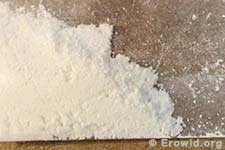Largest Dark Web Marketplace for Illicit Drugs, Firearms, Malware and More Shut Down
The largest criminal marketplace on the dark web for the illicit trade of drugs, firearms, computer hacking tools and more was shut down Thursday, the US Department of Justice (DOJ) announced.
The online marketplace, called AlphaBay, operated for more than two years, allowing buyers and sellers to anonymously exchange illegal goods and services like drugs, toxic chemicals, stolen and fraudulent identification documents and malware.
Alert placed on the Silk Road dark web criminal marketplace’s homepage after its seizure in 2013 (Photo: FBI, Public Domain Mark 1.0)
AlphaBay was hosted on the dark web, a hidden part of the internet that users require special software to access. One of the most common ways to access the dark web is by using a browser called Tor, which prevents network surveillance and essentially renders a user anonymous online.
Financial transactions between users on AlphaBay were conducted using cryptocurrencies, namely Bitcoin, Monero and Ethereum, according to the DOJ. Authorities believe the site was used to launder hundreds of millions of dollars from such illegal transactions.
AlphaBay was also linked to multiple overdose deaths in the US as a “major source” of fentanyl and heroin, The Independent reported.
The investigations that led to Thursday’s seizure of AlphaBay and Hansa, another major criminal market on the dark web, were led by the Federal Bureau of Investigation (FBI), the US Drug Enforcement Agency and the Dutch National Police, according to Europol, which also supported the operations.
Law enforcement agencies in Thailand, Lithuania, Canada, the UK and France also cooperated in the seizure of AlphaBay and Hansa’s digital infrastructure.
“Transnational organized crime poses a serious threat to our national and economic security,” said FBI Acting Director Andrew McCabe.
“Whether they operate in broad daylight or on the dark net, we will never stop working to find and stop these criminal syndicates.”
Authorities were able to take AlphaBay down in early July when they took the site’s alleged founder Alexandre Cazes into custody, The New York Times reported.
Cazes, 25, was a Canadian citizen living in Bangkok, Thailand. A few days after being arrested, on July 12, Cazes apparently committed suicide.
He was found to have possessed millions of dollars in cryptocurrency and luxury assets around the world, including expensive vehicles, residences and a hotel in Thailand.
At the time of its takedown, AlphaBay hosted more than 250,000 listings for illegal drugs and chemicals and more than 100,000 listings for stolen or fake documents, counterfeit goods, firearms and other illicit goods and services.
By comparison, the marketplace’s scope dwarfed the former largest illegal dark web exchange called the Silk Road, which was taken down in 2013 and had about 14,000 listings.
Europol Executive Director Rob Wainwright called AlphaBay’s demise a “massive blow to the underground criminal economy.”
However, the authorities’ fight against dark web markets is likely to continue.
In the wake of AlphaBay and Hansa’s seizure, NBC News reported a spike in traffic to a former competitor of the two marketplaces called DreamMarket, which might now enjoy a corner on the illegal market.
***
The U.S. Attorney’s Office for the Eastern District of California filed a civil forfeiture complaint against Alexandre Cazes and his wife’s assets located throughout the world, including in Thailand, Cyprus, Lichtenstein, and Antigua & Barbuda. Cazes and his wife amassed numerous high value assets, including luxury vehicles, residences and a hotel in Thailand. Cazes also possessed millions of dollars in cryptocurrency, which has been seized by the FBI and the Drug Enforcement Administration (DEA).
According to publicly available information on AlphaBay prior to its takedown, one AlphaBay staff member claimed that it serviced over 200,000 users and 40,000 vendors. Around the time of takedown, there were over 250,000 listings for illegal drugs and toxic chemicals on AlphaBay, and over 100,000 listings for stolen and fraudulent identification documents and access devices, counterfeit goods, malware and other computer hacking tools, firearms and fraudulent services. Comparatively, the Silk Road dark web marketplace, which was seized by law enforcement in November 2013, had reportedly approximately 14,000 listings for illicit goods and services at the time of seizure and was the largest dark web marketplace at the time.
“This is likely one of the most important criminal investigations of the year – taking down the largest dark net marketplace in history,” said Attorney General Jeff Sessions. “Make no mistake, the forces of law and justice face a new challenge from the criminals and transnational criminal organizations who think they can commit their crimes with impunity using the dark net. The dark net is not a place to hide. The Department will continue to find, arrest, prosecute, convict, and incarcerate criminals, drug traffickers and their enablers wherever they are. We will use every tool we have to stop criminals from exploiting vulnerable people and sending so many Americans to an early grave. I believe that because of this operation, the American people are safer – safer from the threat of identity fraud and malware, and safer from deadly drugs.”
“Transnational organized crime poses a serious threat to our national and economic security,” said Acting Director Andrew McCabe of the FBI. “Whether they operate in broad daylight or on the dark net, we will never stop working to find and stop these criminal syndicates. We want to thank our international partners and those at the Department of Justice, the DEA and the IRS-CI for their hard work in demonstrating what we can do when we stand together.” More here.






/s3.amazonaws.com/arc-wordpress-client-uploads/wweek/wp-content/uploads/2017/07/03171851/AishaCollins_1.jpg)
/s3.amazonaws.com/arc-wordpress-client-uploads/wweek/wp-content/uploads/2017/07/03190427/Death_bitcoin_chart_1.png)
/s3.amazonaws.com/arc-wordpress-client-uploads/wweek/wp-content/uploads/2017/07/03190315/Death_bitcoin_chart_2.png)
/s3.amazonaws.com/arc-wordpress-client-uploads/wweek/wp-content/uploads/2017/07/03190944/Death_bitcoin_chart_3.png)
/s3.amazonaws.com/arc-wordpress-client-uploads/wweek/wp-content/uploads/2017/07/05112834/Aisha-Collins-House_Hilary-Sander.jpg)
/s3.amazonaws.com/arc-wordpress-client-uploads/wweek/wp-content/uploads/2017/07/03171906/Khleborod.jpg)
/s3.amazonaws.com/arc-wordpress-client-uploads/wweek/wp-content/uploads/2017/07/03180639/Death_bitcoin_pullquote_2.png)
/s3.amazonaws.com/arc-wordpress-client-uploads/wweek/wp-content/uploads/2017/07/03171853/aishacollins_2.jpg)